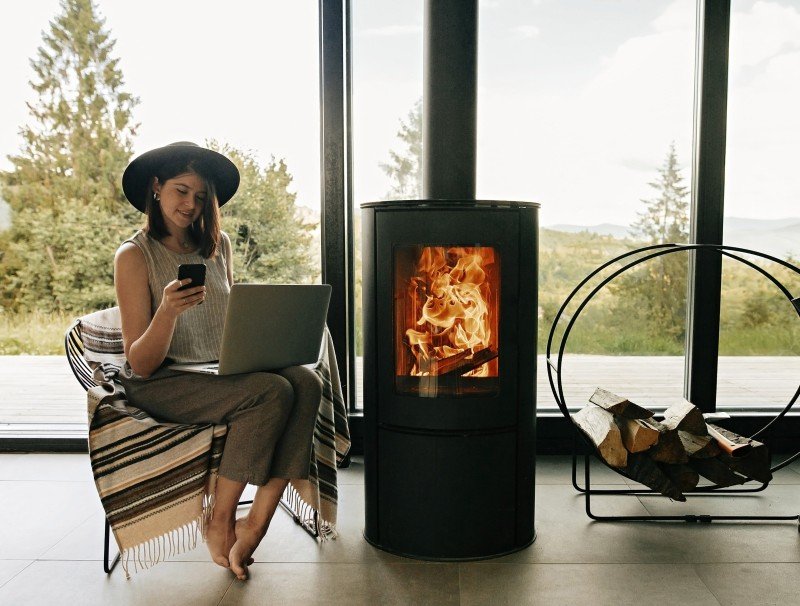A Peek Into Best Fireplace's Secrets Of Best Fireplace
The Best Fireplaces for Heat: A Comprehensive Guide
As the cold months approach, having an effective and reliable heat source becomes a leading priority for numerous property owners. Fireplaces not just enhance the ambiance of a home however also act as a terrific source of heat when temperature levels drop. With different alternatives available on the marketplace, it's vital to understand which type of fireplace best suits your heating requirements and choices. This guide will check out the very best fireplaces for heat, their advantages, and how to choose the right one for your home.
Comprehending Different Types of Fireplaces
Before diving into the best fireplaces for heat, it's vital to understand the different types available:
Wood-Burning Fireplaces: Traditional and typically utilized as the centerpiece of a room, wood-burning fireplaces develop a warm and relaxing environment.
Gas Fireplaces: These offer convenience and consistent warmth without the upkeep needed for wood-burning models.
Electric Fireplaces: Ideal for those looking for an easy-to-install alternative, electrical fireplaces are versatile and can supply heat without venting issues.
Pellet Stoves: These eco-friendly options utilize compressed wood pellets and can offer efficient heating.
Bioethanol Fireplaces: A modern alternative that burns bioethanol, generating heat without the requirement for a flue or chimney.
Benefits and Disadvantages of Each Type of Fireplace
Type of Fireplace
Advantages
Disadvantages
Wood-Burning
Conventional visual, heat output
Needs constant fuel supply, upkeep, ash disposal
Gas
Hassle-free, simple to utilize
Needs gas line, less atmosphere compared to wood
Electric
No venting required, much easier setup
Limited heating capacity, depends on electrical energy
Pellet Stoves
Environmentally friendly, efficient
Needs electrical energy for operation, manual feeding
Bioethanol
No chimney needed, contemporary design
Pricey fuel, lower heat output compared to others
Leading Choices for Heating Fireplaces
1. Napoleon 1100P Freestanding Wood Stove
- Type: Wood-Burning
- Heating Area: Up to 1,800 sq. ft.
- Efficiency: 78%
- Key Features: Air wash system for cleaner glass, large firebox, and compact design.
2. Empire Comfort Systems Castleton Direct Vent Gas Fireplace
- Type: Gas
- Heating Area: Up to 1,500 sq. ft.
- Efficiency: 80%
- Key Features: Variety of styles, thermostat control, and beautiful logs.
3. Dimplex Revillusion Electric Fireplace
- Type: Electric
- Heating Area: Up to 1,000 sq. ft.
- Efficiency: 100% heat made use of.
- Secret Features: Realistic flame impact, easy installation, and push-button control.
4. Traeger Pellet Grills Pro 575 Wood Pellet Grill
- Type: Pellet Stove
- Heating Area: Variable, based upon space heating.
- Efficiency: 90%
- Key Features: Versatile grill and heating abilities, Wi-Fi-enabled.
5. Real Flame Siena Bio-Ethanol Fireplace
- Type: Bioethanol
- Heating Area: Up to 500 sq. ft.
- Efficiency: 3,000 BTU/hour
- Secret Features: Portable, contemporary design, and no venting needed.
Fireplace Model
Type
Heating Area
Efficiency
Cost Range
Napoleon 1100P Freestanding Wood Stove
Wood-Burning
Approximately 1,800 sq. ft.
78%
₤ 1,500 – ₤ 2,000
Empire Castleton Gas Fireplace
Gas
As much as 1,500 sq. ft.
80%
₤ 1,200 – ₤ 2,500
Dimplex Revillusion Electric
Electric
As much as 1,000 sq. ft.
100%
₤ 600 – ₤ 1,200
Traeger Pro 575
Pellet Stove
Variable
90%
₤ 500 – ₤ 800
Real Flame Siena Bio-Ethanol
Bioethanol
Up to 500 sq. ft.
3,000 BTU
₤ 300 – ₤ 600
Aspects to Consider When Choosing a Fireplace
When choosing a fireplace for heating functions, a number of aspects need to be taken into consideration:
1. Heating Capacity
Understanding the square footage you need to heat is essential. Step the location and compare it with the output of the fireplace.
2. Type of Fuel
Consider the fuel source readily available in your location (wood, gas, electrical power, and so on) and your convenience with utilizing that fuel.
3. Effectiveness Rating
A greater effectiveness score means better heat retention and energy use.
4. Installation Requirements
Some fireplaces need comprehensive setup, while others can be utilized instantly. Evaluate your capability and willingness to accommodate these needs.
5. Looks
The appearance and style of the fireplace should match your home design, while also being useful for your heating needs.
Frequently Asked Questions (FAQ)
1. What type of fireplace is the most efficient for heating?
Electric fireplaces are 100% effective as they transform all energy utilized into heat. However, for larger spaces, high-efficiency wood or gas fireplaces can also supply significant heating while maintaining heat.
2. Can I utilize a gas fireplace throughout a power outage?
Typically, gas fireplaces run separately of electrical energy, indicating they can still function during power blackouts, supplied a proper gas supply is offered.
3. How typically should I service my fireplace?
For wood-burning fireplaces, an annual examination and cleansing are recommended. Fireplace In Sale and electric variations generally require less frequent upkeep, however an annual check is still recommended.
4. What is the life-span of a fireplace?
The lifespan varies significantly depending on the type and use. A wood-burning fireplace may last 20-30 years with correct upkeep, while electrical models might last approximately 15 years.
5. Is a wood-burning fireplace worth the hassle?
While wood-burning fireplaces need more upkeep and fuel management, lots of individuals value their ambiance, heat output, and the experience of a traditional fire.
Picking the best fireplace for heat in a home includes mindful consideration of type, performance, size, and setup requirements. Each type of fireplace has distinct qualities and advantages that cater to various choices and heating requirements. With this extensive guide, homeowners can make educated decisions to enjoy a warm and comfortable winter season. Whether going with a standard wood-burning stove or a modern-day electrical system, the right fireplace can substantially boost both convenience and atmosphere in any home.
